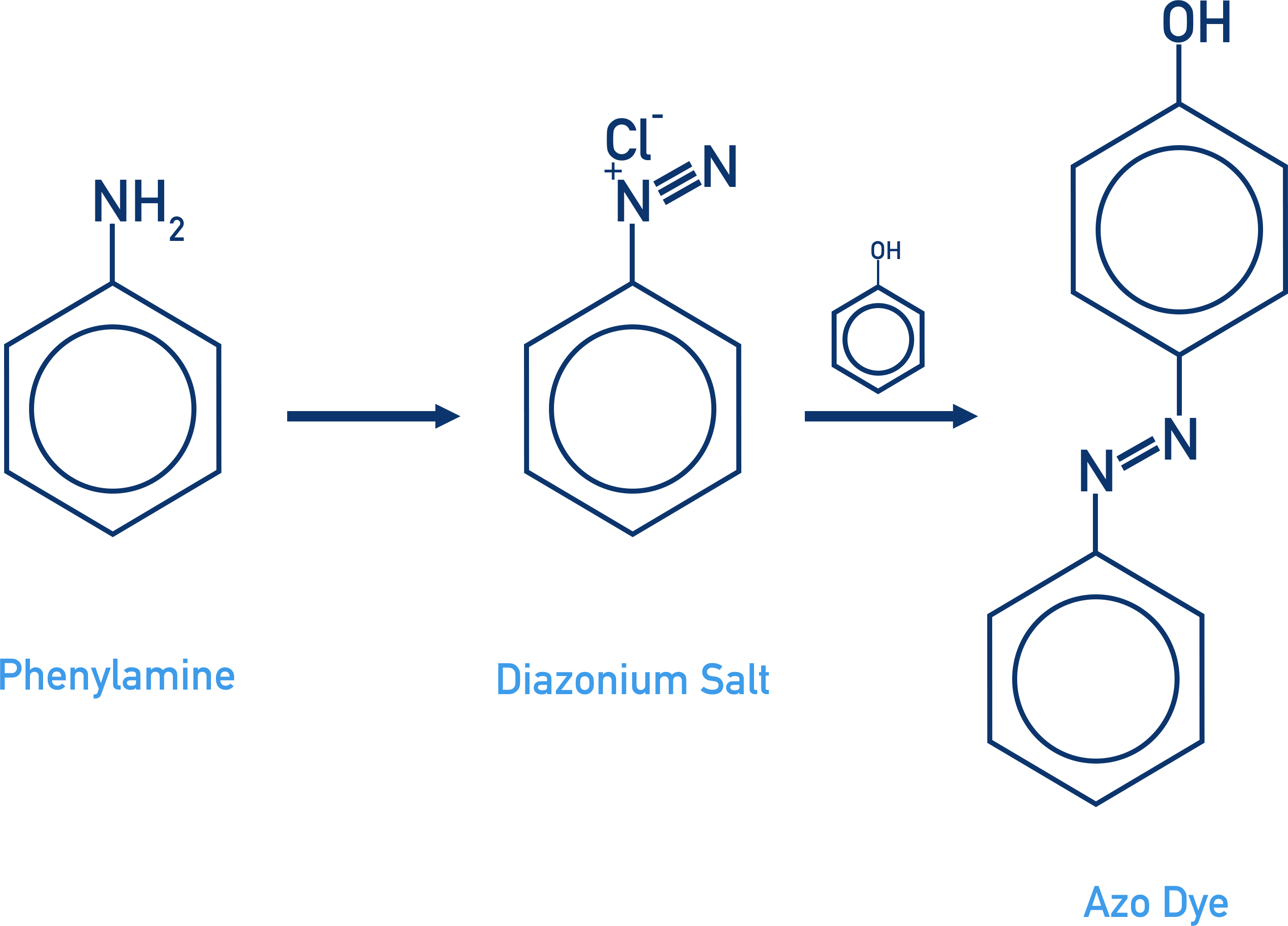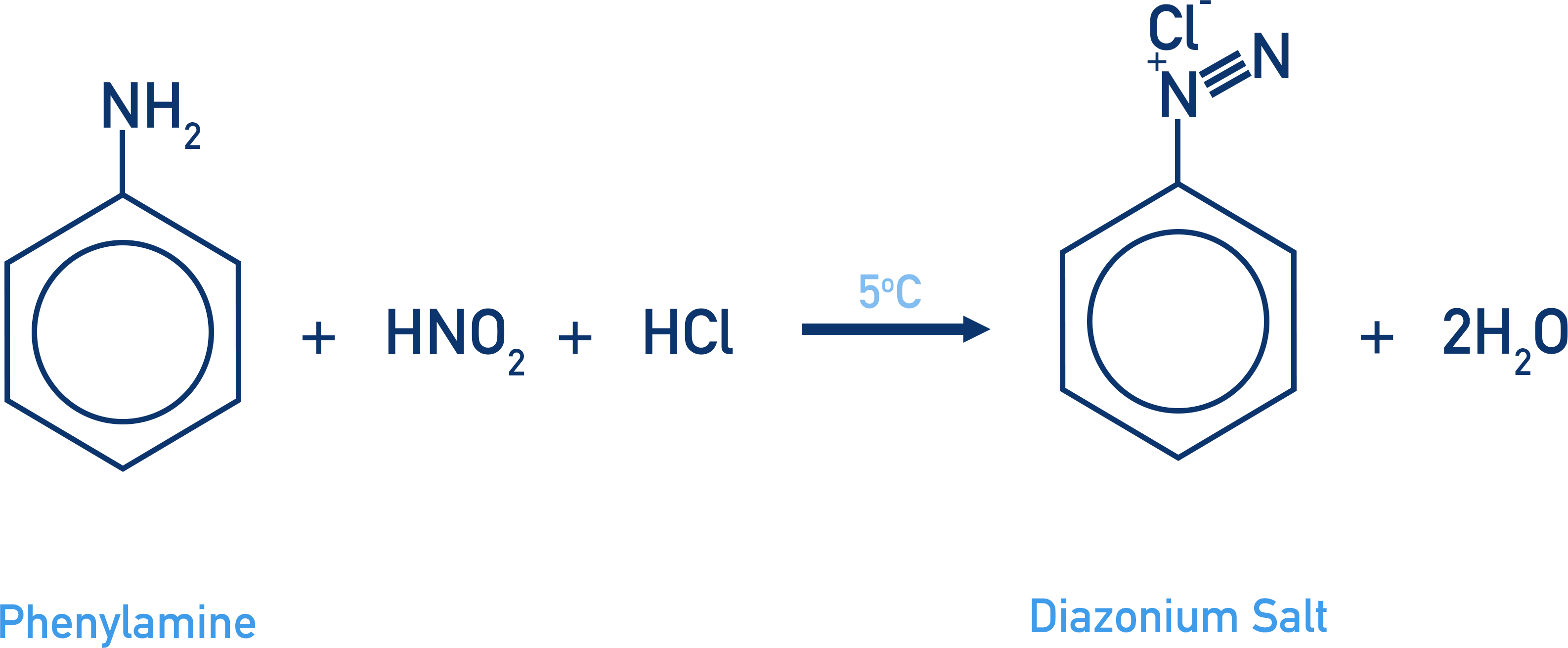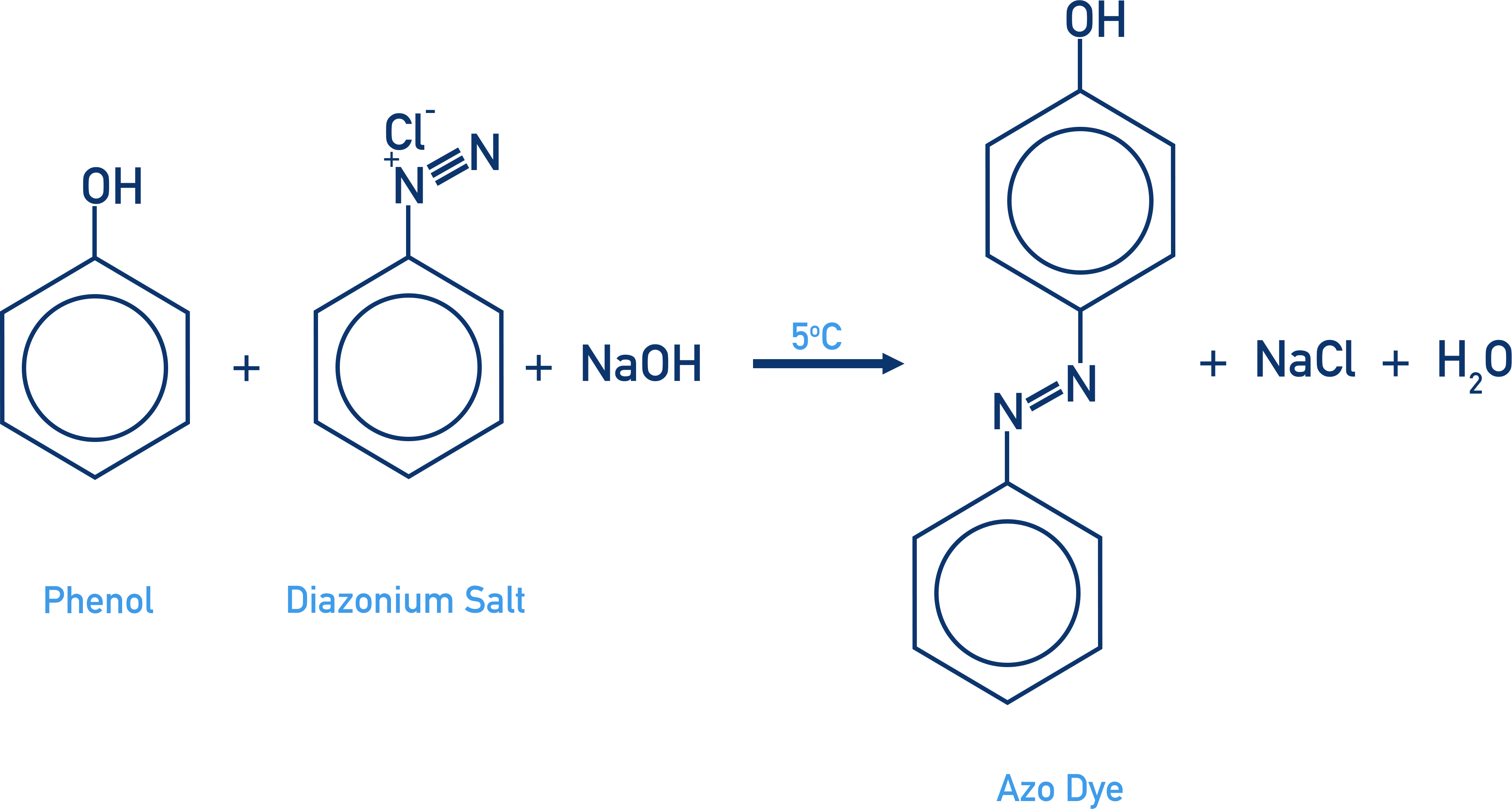Quick Notes Preparing Azo Dyes
- The chromophore in an organic dye requires a high level of electron delocalisation.
- Azo dyes are compounds formed from a diazonium salt and an aromatic compound (usually phenol).

- The formation of azo dyes happens in two stages:
- A diazonium salt is formed from the reaction of phenylamine with nitrous acid and hydrochloric acid.
- The diazonium salt is coupled with the phenol by reacting them together with sodium hydroxide.
- Diazonium salts are highly unstable, and to stop them decomposing during the reaction low temperatures are used (5oC).
Full Notes Preparing Azo Dyes
Organic dyes require a high degree of electron delocalisation to produce a chromophore (the part of an organic molecule that gives a dye its specific colour). Azo dyes contain two nitrogen atoms bonded together, each also bonded to a carbon ring. This arrangement of bonding provides enough delocalisation of electrons to produce a chromophore.
Azo dyes can by prepared by the combination of an aromatic amine with an aromatic compound. At A-level, this ‘other’ aromatic compound is usually phenol.

The process occurs in two stages: the first produces a diazonium salt from the aromatic amine, and the second couples this diazonium salt with the ‘other’ aromatic compound.
The most common example at A-level is phenylamine and phenol.
Diazonium Salt Formation
The aromatic amine is reacted with nitrous acid and hydrochloric acid.
Nitrous acid is an unstable acid and difficult to store. It’s usually prepared at the start of the reaction by the reaction of sodium nitrite with hydrochloric acid.

The diazonium salt is highly unstable and can decompose easily. To stop this happening, the reaction happens at very low temperatures (5oC – although different exam boards sometimes use different temperatures).

Coupling of Diazonium Salt and Aromatic Compound
The diazonium salt is now bonded to the desired aromatic compound in a ‘coupling’ reaction.
The diazonium salt and aromatic compound (phenol) are mixed with sodium hydroxide. The sodium ion from the sodium hydroxide removes the chloride ion from the diazonium salt. This leaves a positively charged diazonium ion to behave as an electrophile and react with the aromatic compound, producing an azo dye.

This reaction must also be carried out at very low temperatures to make sure the diazonium salt does not decompose before the azo dye is produced.
